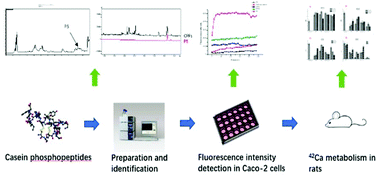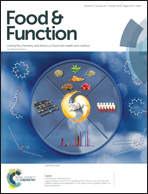Effects of casein phosphopeptides on calcium absorption and metabolism bioactivity in vitro and in vivo
Abstract
Casein phosphopeptides (CPPs) are a series of peptides containing serine phosphate, which prevents calcium precipitation in the small intestine, so that it can be absorbed. Calcium metabolism studies have been typically carried out using traditional metabolic balance tests. Non-radioactive stable isotopes have rarely been used to examine the in vivo absorption and metabolism of calcium in animal models due to their high cost and the difficulty in their accurate detection. However, they have recently attracted intense research attention. In this study, we developed InertSep ME-1 using a chelating resin to effectively separate 42Ca from spectral-interference in the process of ICP-MS detection. The method effectively removes interfering ions like potassium and sodium and greatly improves the accurate detection of the calcium ion isotope. We also investigated the absorption, distribution, and metabolism of different CPPs through both in vitro cell experiments and in vivo animal experiments. The results indicate that CPPs strongly promote calcium absorption, especially the P5 active monomer component. The results of our in vivo studies show that the calcium isotope can be absorbed from the small intestine into the blood. Then, one part is transported to various organs through tissue fluids while another part is excreted into the urine through the kidneys. In general, our results reveal that CPPs promote the absorption of calcium significantly and positively affect calcium metabolism.



 Please wait while we load your content...
Please wait while we load your content...